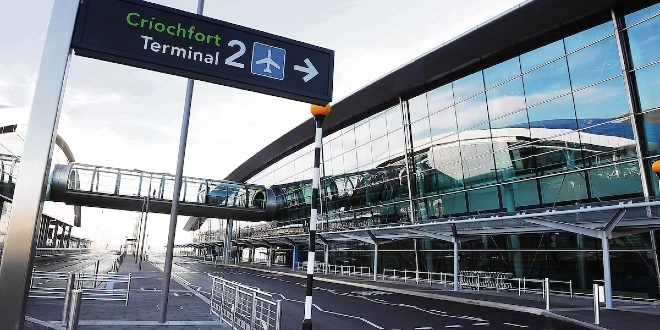The Irish Government is preparing to move ahead with legislation to remove the long-standing 32 million passenger cap at Dublin Airport, a restriction that has been at the heart of a heated debate over economic growth and environmental sustainability.
A spokesperson for Transport Minister Darragh O’Brien confirmed that he plans to bring a memo to Cabinet in the coming weeks, outlining a policy decision that would allow the drafting of a new Bill to eliminate the cap.
Legislative Process Underway
According to the Department of Transport, the Minister is now pursuing a “legislative course of action” to resolve the issue. If Cabinet approves the initial memo, a second proposal will follow containing the General Scheme and heads of Bill, setting out the legislative framework for priority drafting.
The move marks the clearest sign yet that the government intends to act, after months of pressure from airlines and airport authorities who argue the cap is holding back Ireland’s economic potential.
Airlines Welcome Change, Campaigners Push Back
The issue reached new intensity this week when Ryanair CEO Michael O’Leary accused the government of stalling. He criticized officials for failing to honor commitments made in January to remove the cap swiftly.
“We elected a Government. They published a programme in January, promising to remove the cap as soon as possible, and nine months later, no action,” O’Leary said. “We have a do nothing Government, a do nothing Minister.”
Airlines, along with the Dublin Airport Authority (daa), argue that lifting the cap will help boost tourism, trade, and Ireland’s international competitiveness.
However, resident groups and climate campaigners see the proposal as deeply troubling. Local communities near the airport have long complained about increased noise, late-night flights, and quality-of-life concerns. Environmental groups warn that expanding passenger numbers runs directly against Ireland’s climate commitments.
Niamh Maher, spokesperson for St Margaret’s The Ward Residents Group, said the move was “deeply upsetting,” pointing out that ongoing concerns about night flights have yet to be addressed.
The activist network Children’s Rights Over Flights condemned the Minister’s plan, calling it “appalling” and accusing him of prioritizing expansion over climate action.
Environmental Impact of Expansion
The passenger cap, in place since 2007, was originally introduced to manage traffic congestion and environmental pressures. Yet with demand consistently rising, daa has long sought to raise the limit.
A planning application submitted to Fingal County Council in December 2023 projected that raising the cap from 32 million to 40 million passengers per year would increase flight-related emissions by roughly 24%.
Specifically, the daa estimated that by 2034, additional traffic would generate 580,495 extra tons of CO₂ equivalent emissions compared to keeping the cap. By 2046, the increase would still stand at 361,421 tons, although overall emissions from flights are expected to decline after 2031 due to efficiency gains.
The daa also pointed to ongoing efforts in the aviation sector to mitigate climate impacts. These include the transition to Sustainable Aviation Fuel (SAF) and technological improvements that are expected to make aircraft 2% more fuel-efficient per year on average.
Balancing Growth and Sustainability
The decision on Dublin Airport’s capacity will reignite long-standing arguments between those pushing for economic growth and connectivity, and those warning of the environmental costs. For supporters, lifting the cap represents a necessary step for Ireland to keep pace with global air traffic demand. For critics, it signals a retreat from ambitious climate action.
As Minister O’Brien prepares to bring his proposals to Cabinet, the battle lines are once again drawn between business, community, and environmental priorities. The outcome will shape not only the future of Dublin Airport but also Ireland’s wider climate and transport strategy.
 The Daily Star Ireland
The Daily Star Ireland



